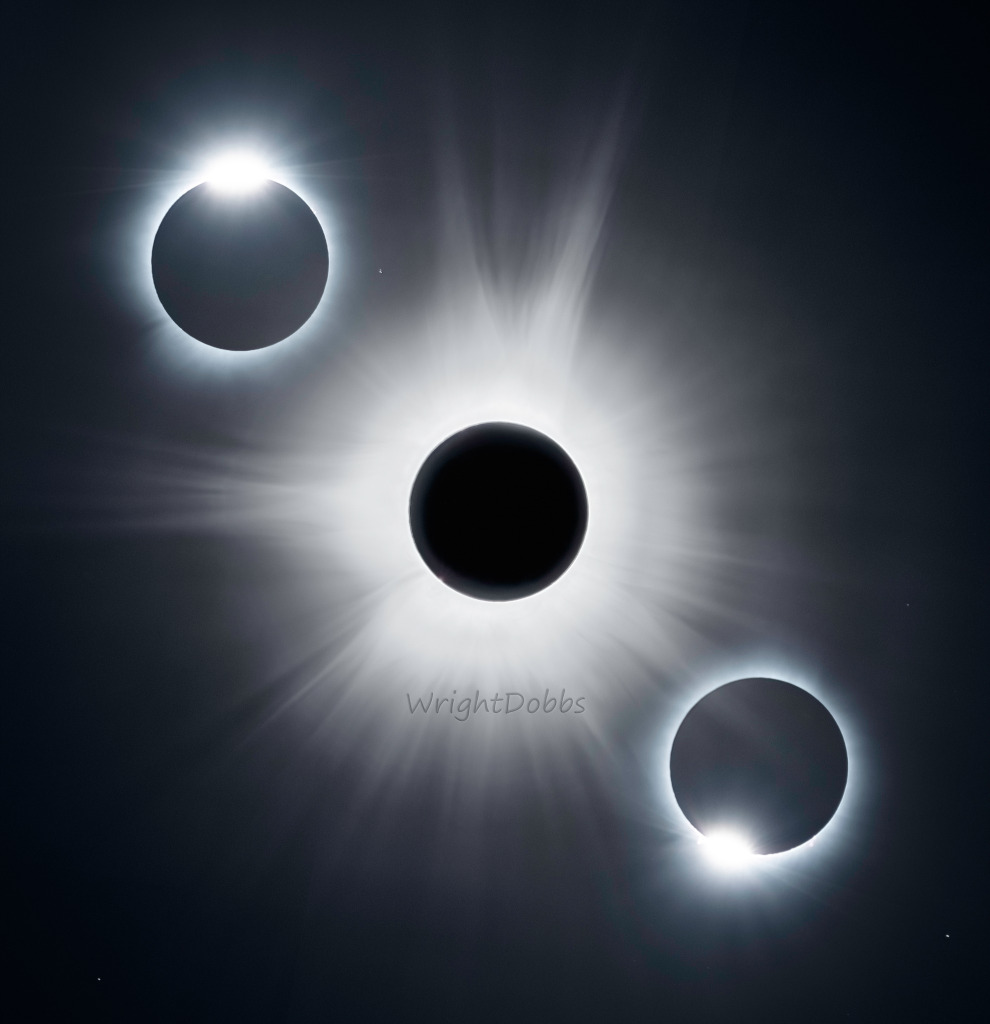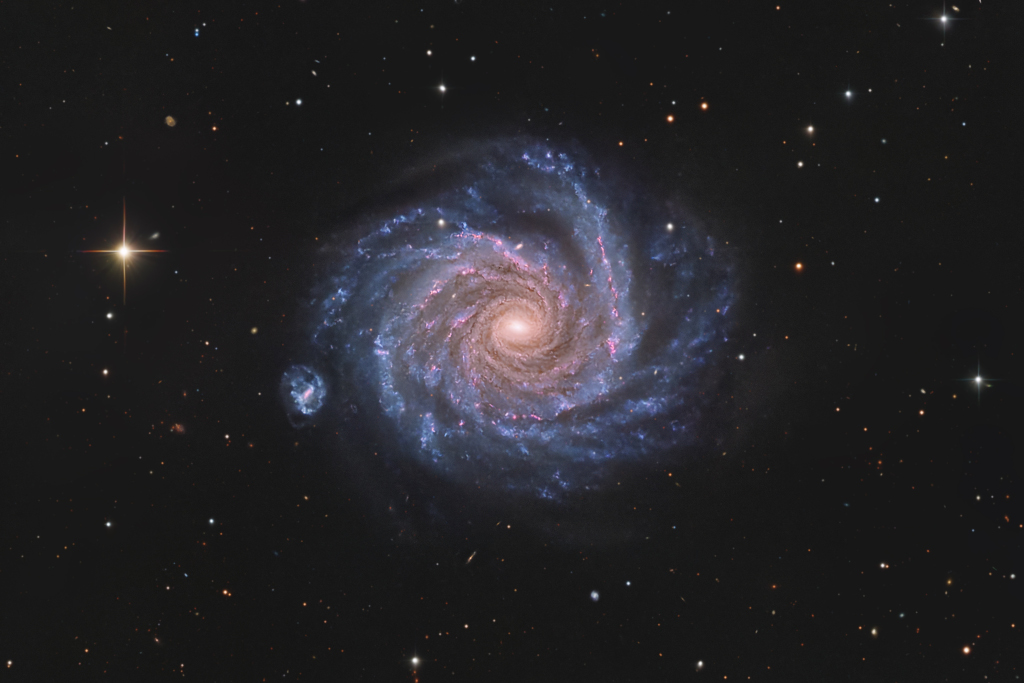2024 April 20
Image Credit & Copyright: Wright Dobbs
Explanation: When the dark shadow of the Moon raced across North America on April 8, sky watchers along the shadow's narrow central path were treated to a total solar eclipse. During the New Moon's shadow play diamonds glistened twice in the eclipse-darkened skies. The transient celestial jewels appeared immediately before and after the total eclipse phase. That's when the rays of a vanishing and then emerging sliver of solar disk are just visible behind the silhouetted Moon's edge, creating the appearance of a shiny diamond set in a dark ring. This dramatic timelapse composite from north-central Arkansas captures both diamond ring moments of this total solar eclipse. The diamond rings are separated by the ethereal beauty of the solar corona visible during totality.










